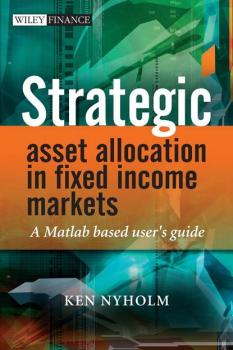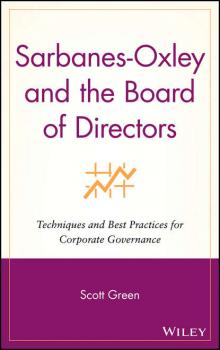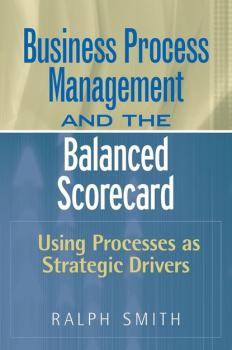ТОП просматриваемых книг сайта:
Группа авторов
Список книг автора Группа авторовАннотация
Matlab is used within nearly all investment banks and is a requirement in most quant job ads. There is no other book written for finance practitioners that covers this Enables readers to implement financial and econometric models in Matlab All central concepts and theories are illustrated by Matlab implementations which are accompanied by detailed descriptions of the programming steps needed All concepts and techniques are introduced from a basic level Chapter 1 introduces Matlab and matrix algebra, it serves to make the reader familiar with the use and basic capabilities if Matlab. The chapter concludes with a walkthrough of a linear regression model, showing how Matlab can be used to solve an example problem analytically and by the use of optimization and simulation techniques Chapter 2 introduces expected return and risk as central concepts in finance theory using fixed income instruments as examples, the chapter illustrates how risk measures such as standard deviation, Modified duration, VaR, and expected shortfall can be calculated empirically and in closed form Chapter 3 introduces the concept of diversification and illustrates how the efficient investment frontier can be derived – a Matlab is developed that can be used to calculate a given number of portfolios that lie on an efficient frontier, the chapter also introduces the CAPM Chapter 4 introduces econometric tools: principle component analysis is presented and used as a prelude to yield-curve factor models. The Nelson-Siegel model is used to introduce the Kalman-Filter as a way to add time-series dynamics to the evolution of yield curves over time, time series models such as Vector Autoregression and regime-switching are also presented Supported by a website with online resources – www.kennyholm.com where all Matlab programs referred to in the text can be downloaded. The site also contains lecture slides and answers to end of chapter exercises
Аннотация
Modelling Single-name and Multi-name Credit Derivatives presents an up-to-date, comprehensive, accessible and practical guide to the pricing and risk-management of credit derivatives. It is both a detailed introduction to credit derivative modelling and a reference for those who are already practitioners. This book is up-to-date as it covers many of the important developments which have occurred in the credit derivatives market in the past 4-5 years. These include the arrival of the CDS portfolio indices and all of the products based on these indices. In terms of models, this book covers the challenge of modelling single-tranche CDOs in the presence of the correlation skew, as well as the pricing and risk of more recent products such as constant maturity CDS, portfolio swaptions, CDO squareds, credit CPPI and credit CPDOs.
Аннотация
There are many books covering Fibonacci from an artistic and historical point of view and almost as many suggesting that Fibonacci retracements and numbers can be successfully applied to financial market time series. What is missing is a book that addresses the common errors in using screen based Fibonacci (and Gann and other tools). The book is a critical exploration of Fibonacci numbers, retracements, projections, timeframes and fanlines and their current usage within the financial markets by technical analysts. Although they can be extremely effective analytical tools when used appropriately, mistakes in usage can be extremely costly from a financial and credibility viewpoint. George MacLean takes a brief look at the history of Fibonacci and Gann, before providing a full account of their applications in financial markets, including fixed income, equity, foreign exchange, commodities and indexes. In particular, he draws attention to the overuse and misuse of easily applied computer packages available to professional and amateur traders.
Аннотация
Sarbanes-Oxley and the Board of Directors is a practical, down-to-earth guide for board members. It covers everything from board basics to compliance with regulations, corporate culture and values to assessing and reacting to hostile shareholder activities. Complete with real-world examples, vignettes, case studies, and other information, this guide helps board members, CEOs, CFOs, and others understand their responsibilities and potential liabilities and implement effective corporate governance. It covers building a strong framework for effective governance, ways to protect board members, specific guidance for effective corporate oversight and communications, and more. Sarbanes-Oxley and the Board of Directors gives directors the knowledge, techniques, and tools to serve the company and its stockholders well.
Аннотация
Business Process Management and the Balanced Scorecard shows managers how to optimally use the balanced scorecard to achieve and sustain strategic success even as the business environment changes. It exceptionally fills the gap between theory and application to facilitate the use of processes as a strategic weapon to deliver world-class performance.
Аннотация
Was ist erlaubt, was nicht? Ethisch und rechtlich konformes Verhalten betrifft nicht nur die Annahme und Vergabe von Gefalligkeiten und Geschenken, sondern auch den Umgang mit Informationen, anderen Personen und Institutionen, personliche Vorteilsnahme, das Vermeiden von Interessenkonflikten, den Umgang mit Ressourcen, technische und personliche Sicherheit sowie den Schutz der Umwelt. Auch Diskriminierung, Mobbing und Chancengleichheit sind Teil dieses Themenkomplexes. In diesem Buch finden Sie klare Regeln zu den Themen Compliance und Business Conduct Guidelines, Musterformulare und praktische Beispiele. Sie erhalten Hinweise zum Einreichen und Umgang mit Beschwerden sowie zur Umsetzung und Kontrolle der Regeln im Unternehmen. Ein weiteres Thema sind die Folgen, die sich fur Unternehmen ergeben konnen, wenn dort keine Business Conduct Guidelines verankert sind – und zwar nicht nur bei gro?en, sondern auch bei mittleren und kleineren Unternehmen. Das Buch wendet sich an Manager und Fuhrungskrafte, an Berater, Juristen und Betriebsrate sowie an Mitarbeiter, die sich uber ihre personliche Rechtslage informieren wollen. Es soll das dunne Eis, auf das sich viele in Erfullung ihrer arbeitsvertraglichen Verpflichtungen begeben, etwas berechenbarer machen. Damit wird die Sicherheit sowohl fur die Handelnden als auch fur die Unternehmen steigen.
Аннотация
With a turnover of some 5-15 billion € / year, the additive manufacturing has industrial niches bearers thanks to processes and materials more and more optimized. While some niches still exist on the application of additive techniques in traditional fields (from jewelery to food for example), several trends emerge, using new concepts: collective production, realization of objects at once (without addition Of material), micro-fluidic, 4D printing exploiting programmable materials and materials, bio-printing, etc. There are both opportunities for new markets, promises not envisaged less than 10 years ago, but difficulties in reaching them.
Аннотация
This book is the third in a series of volumes that combine conservation philosophy in the built environment with knowledge of traditional materials, and structural and constructional conservation techniques and technology: Understanding Historic Building Conservation Structures & Construction in Historic Building Conservation Materials & Skills for Historic Building Conservation The series aims to introduce each aspect of conservation and to provide concise, basic and up-to-date knowledge for architects, surveyors and engineers as well as for commissioning client bodies, managers and advisors. In each book, Michael Forsyth draws together chapters by leading architects, structural engineers and related professionals to reflect the interdisciplinary nature of conservation work. The books are structured to be of direct practical application, taking the reader through the process of historic building conservation and emphasising throughout the integrative teamwork involved. The present volume – Materials & Skills for Historic Building Conservation – describes the characteristics and process of decay of traditional materials which inform the selection of appropriate repair techniques. It provides essential information on the properties of the principal traditional external building materials. Their availability, sourcing and environmental impact is covered, as well as the causes of erosion and decay, and the skills required for their application on conservation projects. It covers the main most commonly used materials and conservation techniques including stone, brickwork, lime products, concrete, iron and steel, timber, wattle and daub, and glass, Thirteen chapters written by the experts present today's key issues in materials and skills for historic building conservation: Gus Astley, Patrick Baty, Charley Brentnall, Michael Bussell, Michael Forsyth, Tony Graham, Chris Harris, David McLaughlin, Brian Ridout, Mike Stock, Geoff Wallis, Ian Williams, Rory Young
Аннотация
This book is the second in a series of volumes that combine conservation philosophy in the built environment with knowledge of traditional materials, and structural and constructional conservation techniques and technology: Understanding Historic Building Conservation Structures & Construction in Historic Building Conservation Materials & Skills for Historic Building Conservation The series aims to introduce each aspect of conservation and to provide concise, basic and up-to-date knowledge for architects, surveyors and engineers as well as for commissioning client bodies, managers and advisors. In each book, Michael Forsyth draws together chapters by leading architects, structural engineers and related professionals to reflect the interdisciplinary nature of conservation work. The books are structured to be of direct practical application, taking the reader through the process of historic building conservation and emphasising throughout the integrative teamwork involved. This present volume – Structures & Construction in Historic Building Conservation – traces the history of structures in various materials and contains guidance on the survey, assessment and diagnosis of structures and the integration of building code requirements within the historic fabric. It discusses conservation engineering philosophy, exposes the conflict between building codes and conservation legislation, and offers solutions. Leading-edge, on-site metric survey techniques are described and a range of structural advice is given, including methods of repair in relation to philosophical principles. Causes of induced movement in historic buildings are explained, together with basic soil mechanics and the assessment and diagnosis of structural failure. Chapters also cover the conservation of different types of construction: masonry, iron and steel, and concrete and reinforced concrete. Fourteen chapters written by the experts present today's key issues in structures and construction for historic building conservation: Bill Blake, Michael Bussell, David Cook, Dina F. D'Ayala, Steve Emery, Michael Forsyth, Ian Hume, Peter Norris
Аннотация
This book provides over 160 model letters, with commentary for use with all the main JCT 2005 building contracts. It concentrates on problems which can arise during a project, and draws on the author’s extensive experience as a contracts consultant. It is a companion to the author’s Standard Letters in Architectural Practice which covers more routine matters. The revised Fourth Edition takes account of: the 2005 editions of the JCT Standard Building Contract, the Intermediate Building Contract and the Minor Works Building Contract, both with their contractor’s design versions, ICD and MWD the 2004 updates of the Standard Form of Agreement for the Appointment of an Architect changes to case law since the last edition was published in 1996 It will be an invaluable guide for architects, building surveyors and project managers.










